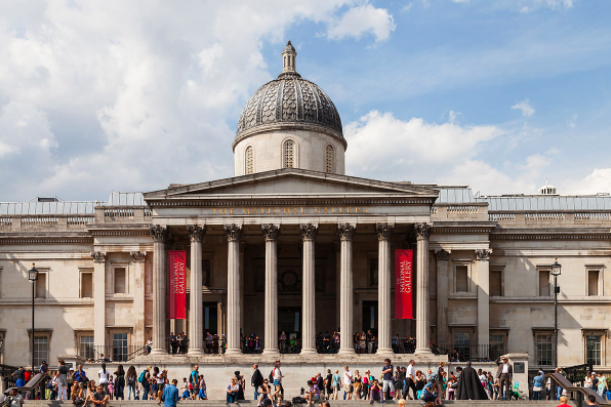
CEO and founder Angie Judge’s upbringing turned out to be the perfect cocktail of ingredients to get her into a job involving museums and data – or as Dexibit dubs it, ‘musedata’.
She grew up constantly visiting museums with her mother, while her father was a technology entrepreneur and software engineer. These influences left Judge with a deep appreciation for cultural institutions, while at the same time propelling her forward into the IT sector.
After a stint working in the IT industry at companies like Hewlett Packard, one day while Judge was at a museum overseas, inspiration struck.
“I had a bit of a light bubble moment when I was in Washington, DC and in one of the museums there, they had some security guards that were using clicker counters [to track visitor numbers],” Judge says.
“Then I started to see them in every museum I went to, and thought ‘My gosh, the whole industry is getting its data from these.’ This was in 2015, so the technology was a long way from where it needed to be.”

Angie Judge
Judge says she really liked the idea of taking forward-thinking, big data and bringing it into a sector that was “a little bit off the beaten track” when it came to new technology.
The clicker counter she spotted at so many institutions was a symbol of where data was at in the industry and just how manually it was collected – but that was no fault of the institutions, as Judge says without spending, the data is hard to quantify.
“If you go into a retail shop and look to manage the performance of that, everything comes down to the cash register – ‘Did I make $10,000 today, is that a good day or a bad day?’ In a museum, it’s really different as you’re looking at visitation, engagement and social benefits, which is really hard to measure.”
Dexibit developed its idea at the Lightning Lab acceleration programme and worked with ATEED to create a Callaghan Innovation proof concept and an R&D concept grant of $200,000. It’s also currently working with New Zealand Trade and Enterprise in its Focus 700 programme.
Its cloud software wades through millions of bits of data and collates unique analytics on visitors to cultural institutions. It then interprets that information to make data-driven decisions and predictions for museums, art galleries, libraries and other cultural venues.
The data gathered is aggregated and anonymous using people’s mobile device signals and tracks where they move through a museum, as well as how long they spend at a particular exhibit.
It also tracks aspects like website data, social media, commercial transactions of what’s being bought in a shop, the tourist numbers within the city and even the weather.
“The museum sector is famous for amazing digital visitor experience, but has lacked innovative technology for operational support systems behind the scenes,’’ Judge says.
“Those kinds of insights help us analyse the performance of museums, and predicts future performance too.”
Judge says being able to predict how future exhibits will fare is the most exciting aspect to Dexibit’s technology that’s being developed.
Soon, curators can produce comparative models on how ideas for future exhibitions will go, as well as running different scenarios on when a particular exhibition should launch and how long the exhibition should run for.
“All of those decisions are huge and depend on a lot of gut feeling,” Judge says. “Our models do months of work in a couple of seconds and produce far more accurate outcomes that anyone could ever work out by hand, giving power to curators to make more informed decisions. This is where machine learning is really powerful.”
So far, museums in New Zealand, Australia, the US and the UK are using Dexibit’s software.
This includes The National Gallery in London. With around 6.3 million visitors annually, it is the 8th largest museum in the world.
The National Gallery digital director Chris Michael says Dexibit’s analytics will help the museum reach a new level of financial sustainability.
Back home, Auckland Art Gallery and Te Papa Museum are on board with the technology. Te Papa has about a 90 percent accuracy rate on forecasting visitors.
“We’re forecasting Te Papa’s visitation down to the hour and now up to a year in advance with incredibly high accuracy,” Judge says.
Looking towards the future, Dexibit wants to develop its technology further in the predictive analytics and AI space.
“Predicting how a future exhibition will go – that’s never happened before, that’s a whole another level of complexity,” Judge says. “That’s what we’ll be focusing on in coming months.”




